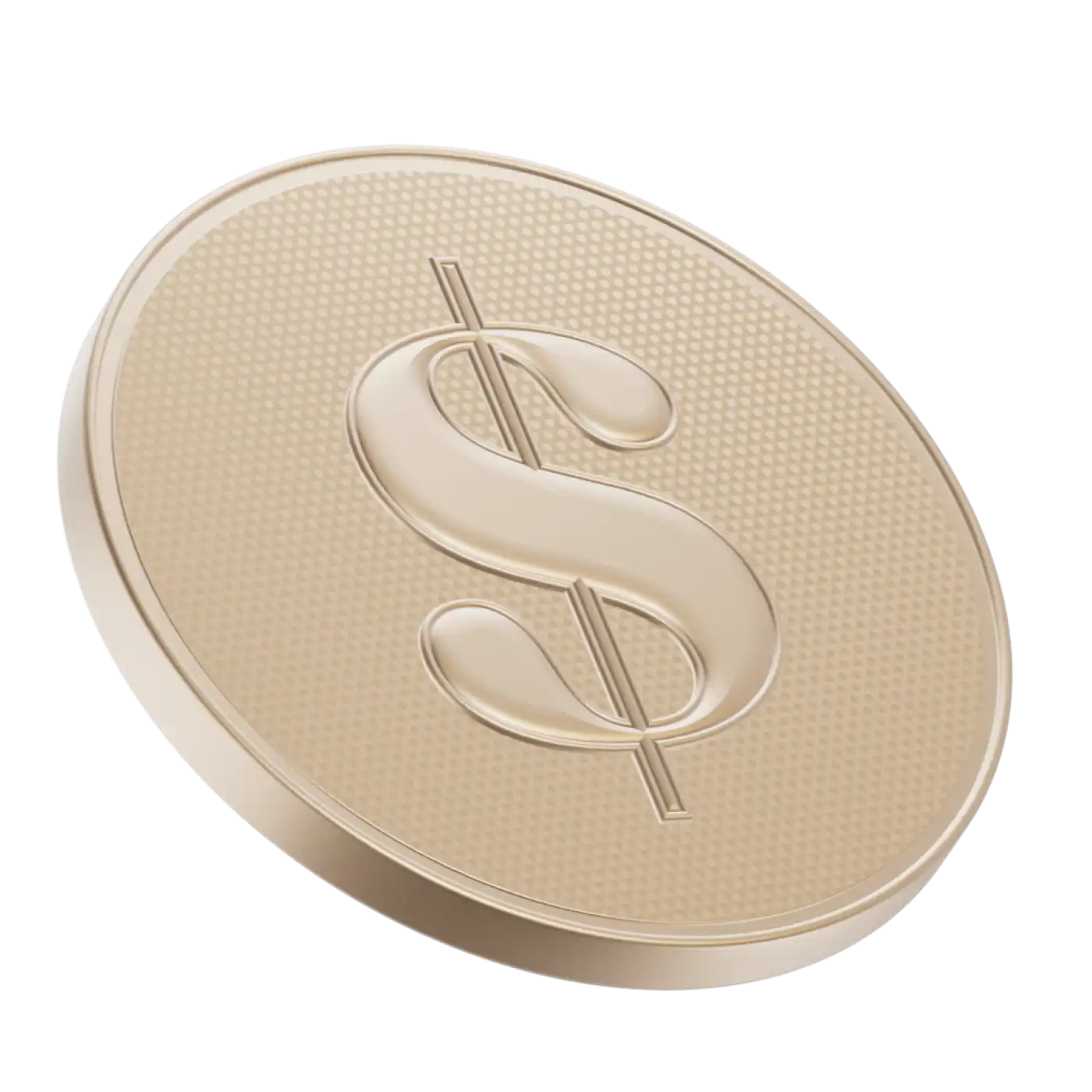Launched in 1965, the Canada Pension Plan (CPP) is a government-led retirement program that can help add a little more gold to your golden years. It was originally meant to provide you with 25% of your average pre-retirement income, but thanks to something called the CPP Enhancement, which was phased in starting in 2019, it now offers up to 33% of your average pre-retirement income.
If you’ve made more than $3,500 per year (except if you live in Quebec, which has its own Quebec Pension Plan, the QPP), you’ve already paid into the CPP, and so has your employer, at the government-mandated 50% share. The good news is that once you turn 60, you can start collecting your pension payments.
Depending on your financial situation, however, you may not want to take your CPP payments right away because for every year you wait, your CPP payout increases. As for how much your CPP payment will be, that depends on two main factors: how much you earned during your career and how old you are when you begin taking your pension.
You reach the maximum amount when you hit 70, so if you can afford to hold off that long, it’s often best to wait. Here, we’ll explain the benefits and downsides to the different CPP timing options.
What are the CPP payment dates?
CPP payments are made near the end of every month. For 2025, those dates are:
January 29
February 26
March 27
April 28
May 28
June 26
July 29
August 27
September 25
October 29
November 26
December 22
Who pays into the CPP?
If you’re a Canadian outside of Quebec who earned more than $3,500 in 2024, you must pay into the CPP. As we mentioned above, if you live in Quebec, you’ll pay into the QPP, which has a slightly higher rate. The CPP plan has two types of contributions paid by taxpayers: one for employers, another for employees. (Self-employed workers pay both contributions). If you are an employee, you split CPP contributions with your employer up to a maximum amount that’s tied to your annual income.
What is the max CPP contribution in 2025?
To receive the maximum CPP payment, you need to have made the max CPP contribution each year for at least 39 years. This maximum contribution changes each year. In 2025, it’s either $4,034.10 or 5.95% of your salary (minus $3,500) — whichever is lower. For self-employed people, who pay both employer and employee contributions, the maximum CPP contribution is $8,068.20.
For anyone who earned more than the maximum annual pensionable earnings in 2024 of $68,500, there is a second contribution rate known as CPP2. If that’s you, you’ll pay the “first CPP” rate of 5.95%, and an additional CPP2 rate of 4% for employers and employees, up to a maximum of $188 a year.
The maximum annual pensionable earnings limit for CPP2 is $73,200 for 2024 — so if you earn more and pay the $188 maximum, you won’t pay any more CPP2.
What are the pros and cons of deferring CPP?
You can start taking CPP at age 60, but you will lose up to 36% of your pension permanently if you take it that early. This is because CPP payments are reduced by 0.6% for every month from your 60th to your 65th birthday. So if you started on your 60th birthday, that would mean a reduction of 7.2% per year (12 months/year x 0.6% per month).
If you delay receiving your CPP until age 70, your payments will be permanently increased by 0.7% for every month after your 65th birthday that you delay the payment — 8.4% per year. That means if you delay CPP until age 70, you will receive 42% more than someone who starts taking payments at 60.
Most people would be financially better off waiting to collect CPP until age 70, or as close to that as possible, because:
During those years you’re not collecting, the investment and inflation risk is the government’s problem, not yours. CPP payouts are inflation-indexed. So if we get periods of high inflation, your expected payout keeps pace. These payouts are also formulaic based on past contributions to the CPP; they aren't based on market returns. So when markets go down, your income doesn't.
It provides longevity protection, since CPP pays until the end of your life. Because your pension is much higher if you take it at 70 than at 60, you start to "catch up" on money received and eventually reach a break-even point somewhere in your early to mid 80s. If you end up living into your 90s or beyond, you will collect considerably more from the government if you deferred your pension to 70 instead of starting it at 60. This is useful because the risk many retirees worry about is running out of money late in life.
CPP has a good implied rate of return (that’s the difference between the future rate and today’s rate).
So what’s the trade-off? That you have to spend more of your savings during the years you’re waiting to collect government benefits. If you can’t afford to wait, or you have poor longevity prospects, you might be better off claiming CPP as early as possible.
Is CPP taxed as income?
Yes, CPP is considered income and is fully taxable at your marginal tax rate. To avoid a big tax shock at the end of the year, you can request that income tax be deducted from each payment.
Can I share my CPP with my partner?
Yes, the CPP payments you receive can be shared with a lower-income spouse or partner. They can also be split in the case of separation or divorce. If one partner was out of the workforce, or worked part time to take care of a baby or child, there is a provision for child rearing that will exclude the lower-earning years from the CPP payment calculation, effectively increasing the CPP payment you can receive.
What’s the difference between CPP and OAS?
Old Age Security (OAS) is a pension that’s separate from CPP and is given to Canadians over 65. Here are some other differences: CPP It does not start automatically; you must apply for it. To qualify for CPP, you must:
be at least 1 month past your 59th birthday
intend for your CPP to start within the next 12 months
have worked in Canada and made at least one valid CPP contribution
OAS Unlike CPP, OAS is completely funded by the federal government, so you don’t pay into it. Service Canada can automatically enroll some people in OAS, but not others. They’ll let you know if you’ve been automatically enrolled. Otherwise, you’ll have to do it yourself.
To qualify for OAS, you must:
be 65 or older
have lived in Canada at least 10 years since turning 18, if you currently live in Canada; if you currently reside outside of Canada, you must have resided in Canada at least 20 years since turning 18
be a Canadian citizen or legal resident at the time your application is approved, or before you left Canada to reside elsewhere
have lived in Canada for at least 40 of the 47 years between your 18th and 65th birthday (to qualify for the maximum payment)
OAS is considered income and is fully taxable at your marginal tax rate. OAS is income-tested, which means that if you make more than a certain amount of income in a year, your OAS distributions will be reduced.
Is CPP alone enough for retirement?
Based on the most recent figures, if you’re over 75 and you receive the average CPP payment for 2024 ($808.14 a month), that would only be $9,697.68 for the year and is likely not enough for most Canadians to comfortably retire.
If you live simply and your house is paid for, you might squeak by on CPP and OAS alone, but it’s good to have a backup plan. What kind of backup plan? A TFSA or an RRSP are both good options.
Frequently Asked Questions
What is CPP in Canada?
The Canada Pension Plan (CPP) is a monthly, taxable pension benefit designed to help replace part of your income after you retire. If eligible, you can start drawing CPP at age 60 for a reduced benefit, 65 for the full benefit, and 70 for an enhanced benefit.
How do I apply for CPP?
You can apply for CPP retirement benefits either online or through a paper application. If you submit a paper application, it generally takes up to 120 days to receive a written notification of decision.
Applying online is much faster, with a notice of decision generally received between 7 and 14 business days after application. You need a My Service Canada Account to do so, and you’ll receive an estimate of your benefits upon filing your application.
How is CPP calculated?
Your CPP payment is based on how much you paid into the program over your working life and how old you are when you begin receiving the benefit.
You can find out how much you’re on track to receive from CPP using the Canadian Retirement Income Calculator.
How much will CPP increase this year?
CPP income is indexed to the Consumer Price Index All-Items Index. Every January, benefit rate increases are calculated to make sure CPP retirement benefits keep up with cost-of-living increases.
How much CPP is deducted from my paycheck?
CPP deductions are based on a percentage of your income up to the maximum pensionable earnings, minus the 2025 basic exemption amount of $3,500. For 2025, the maximum pensionable earnings is $71,300.
Up to that maximum, you pay 5.95% of your income into CPP.
What conditions qualify for CPP disability?
There are several mental and physical conditions that qualify someone for the CPP disability benefit. The current criteria are:
You are under age 65.
You’ve made sufficient contributions to the CPP.
You have a mental/physical disability that regularly stops you from doing any substantially gainful work.
You have a disability that is long-term or of indefinite duration, or one that is likely to result in death).
How long does it take to get approved for CPP disability?
You can apply for the CPP disability benefit either online or through submission of a paper form. Whichever application method you choose, you should expect to wait up to 120 days for a decision to be made and communicated to you.
What happens to your CPP if you die before collecting?
If you die before you receive your CPP benefits, the state will pay a death benefit to your beneficiaries. Your spouse is automatically registered as your beneficiary unless they waive their rights.
How your CPP is paid out depends on whether you were working or already drawing CPP. If you die before your earliest retirement age, your beneficiary can choose between:
An immediate monthly pension payable for their lifetime
A lump-sum payment equal to the value of your contributions plus interest accrued, or the lump-sum commuted value, whichever is greater
If you die after your earliest retirement age, your spouse automatically receives the lifetime monthly pension.



